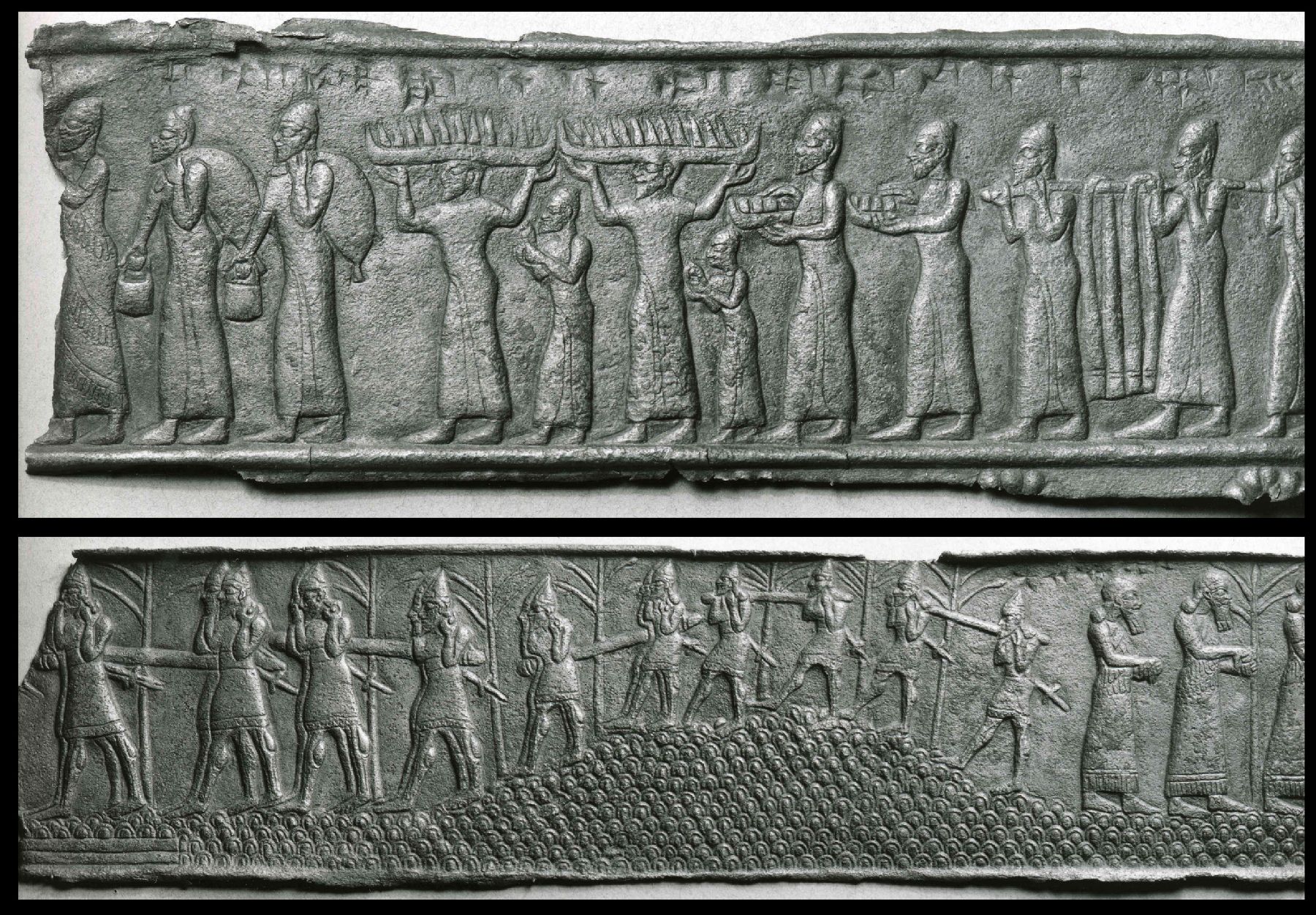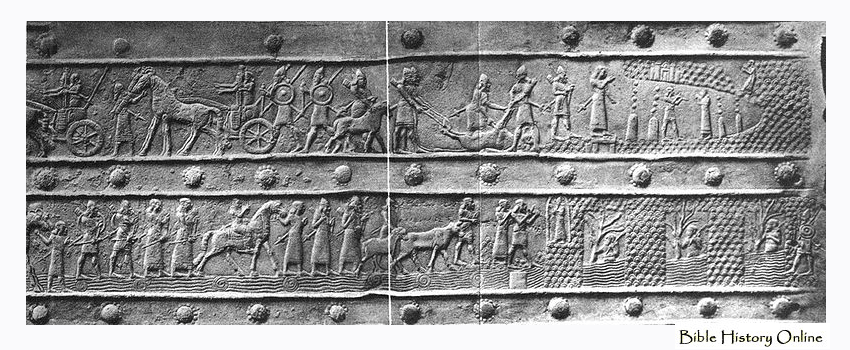Balawat
Imgur - Enlil ( Enlil has agreed modern name Balawat ) was located on the trade route from Nineveh and Arbela after Arrapha, 27 kilometers southeast from the present Mosul and 16 kilometers northeast of Kalhu. The name of the city has been handed to his stone tablet in the Mamu Temple.
History
Imgur - Enlil was built and named by Ashur - nasir - apli II, however, was already inhabited before. Tucker mentioned finds of the Halaf, Ubaid and Uruk- time and mittelassyrische potsherds. The tell measures 250x150 meters or 230x160 m by Andreas Schachner and rises some 15 meters above the plain; the lower town was surrounded with a square mounting with a side length of 800 meters and covers an area of 64 ha. Imgur - Enlil bloom was probably under Ashur - nasir - apli II, who received the tribute of the Kudurru of Suhu here, as well as under - Salmānu ašarēd III. , Both rulers built a palace here. Towards the end of the reign Salmānu - ašared III. Imgur - Enlil joined the rebellion of Ashur - danin apli. Prove economic texts from the Mamu Temple, the city was also in the 7th century. At the fall of the Assyrian Empire Imgur - Enlil was probably destroyed by the Medes and Babylonians between 612 BC and 609 BC. In the Hellenistic period the Tell was settled again.
Temple and bronze doors
After 1878, decorated bronze plates (bands N, O and P. Unger after 1920) had appeared on the art market, Hormuzd Rassam began in the winter of the same year during excavations in Balawat. Only parts of two bronze reliefs were found. One had make Ashur - nasir - apli II for his palace let (Gate A). The second thing better was the palace of Salmānu - ašarēd III. ( 858-824 ) made (Gate C), 13 of the 16 bands are now in the British Museum in London, the other in the Louvre, the Istanbul Archaeological Museum and the Walters Art Gallery in Baltimore. Max Mallowan conducted further excavations 1956-1957. He put a temple of the God Mamu with a third bronze door free (Gate B). In addition, a stone altar with inscription for the dream God Mamu found. Ashur - nasir - apli II reported in the inscription of the temple: I did this because I wanted to build a temple for the God Mamu, the ( libit ina ekallija ) in the immediate vicinity should be in my royal palace. For the temple and his palace of the Assyrian king had a statue of the Mamu and customizing (the carrier of the bronze reliefs ) cedar wood doors. They consisted of 20-25 cm thick vertical bar. As of 1989, dug David Oates of the British Museum in Balawat.
Each of the gates had eight bronze strips, the gate of Salmānu - ašarēd III. but had two registers (a and b ), which are separated by rosette ribbons and was significantly greater than the gates A and B. 7.3 m gates with bronze fittings are also known from Kalhu, Ashur, major Šarrukin and Tell Haddad. They were probably between 847-845 in the royal workshops in bit Mumme in Kalhu. The tapes from the gate of Salmānu - ašarēd are provided with explanatory inscriptions and almost completely intact. Eckhard Unger laid in 1912 and 1920 before a first reconstruction of the arrangement of the bands. Recently, Andreas Schachner has extensively studied the fittings 2007. Schachner sees her in the gates " public art ", they differ markedly from the orthostat in the palace interior, which were visible only for a small, predominantly Assyrian elite. The bands are made of bronze ( 7:9-10 % tin) and are embossed and engraved. They were curved around the pivot post of the doors, but were pressed flat after recovery or at the museum. The order of the bands is not secured, different reconstructions have been proposed.









